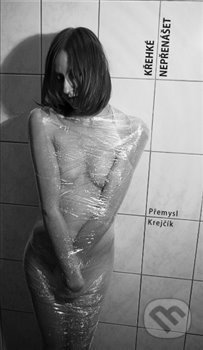
Aalto
Knihu koupíte v
2 e-shopech
od
337 Kč
Pokud se vám po kliknutí na tlačítko "Do obchodu" nezobrazí stránka knihy ve vybraném e-shopu, je třeba vypnout AdBlock ve vašem prohlížeči pro naši stránku.
Návod na vypnutí je například na adrese https://o.seznam.cz/jak-vypnout-adblock/#1.
Krátký popis
Alvar Aalto (1898–1976) made a unique modernist mark. Influenced by
both the landscape and the political independence of his native
Finland, he designed warm, curving, compassionate buildings, wholly
set apart from the slick, mechanistic, geometric designs that
characterized much contemporary European practice. Whether a
church, a villa, a sauna, or a public library, Aalto’s organic
structures tended to replace plaster and steel with brick and wood,
often incorporating undulating, wave-like forms, which would also
appear in his chair, glassware, and lamp designs. An adherent to
detail, Aalto insisted upon the humanity and societal role of
architecture, stating: “Modern architecture does not mean using
immature new materials; the main thing is to work with materials
towards a more human line.” Many of his public buildings such as
Säynätsalo Town Hall, the lecture theatre at Otaniemi Technical
University, the Helsinki National Pensions Institute and the
Helsinki House of Culture may be seen as psychological as well as
physical landmarks in the rebuilding of Finland after the ravages
of war. This book brings together Aalto’s key works to introduce
the architect hailed as a champion of environmentally sound,
progressive design, with a deep-rooted sense of home. The author
Finnish-born Louna Lahti worked for the Alvar Aalto Society for
many years, first as exhibition secretary and later as treasurer,
before establishing her own firm in 1984. She has lectured and
published extensively on visual arts and architecture. The editor
Peter Gössel runs an agency for museum and exhibition design. He
has published TASCHEN monographs on Julius Shulman, R. M.
Schindler, John Lautner, and Richard Neutra as well as several
architecture titles in the Basic Art Series.
Vývoj ceny
Aktuální Ø cena knihy Aalto je 369 Kč
Výběr knih vydavatele
Taschen
Zobrazit všechny knihy vydavatele
Taschen
Naše tipy
- Právě probíhající akce a slevy na knihy
-
Knihydobrovsky.cz | do 12.12.2025
-
Knihydobrovsky.cz | do 17.12.2025
-
Knihydobrovsky.cz | do 24.12.2025
-
Knihydobrovsky.cz | do 24.12.2025
-
Bookshop.cz | do 31.12.2025
- zobrazit všechny akce










